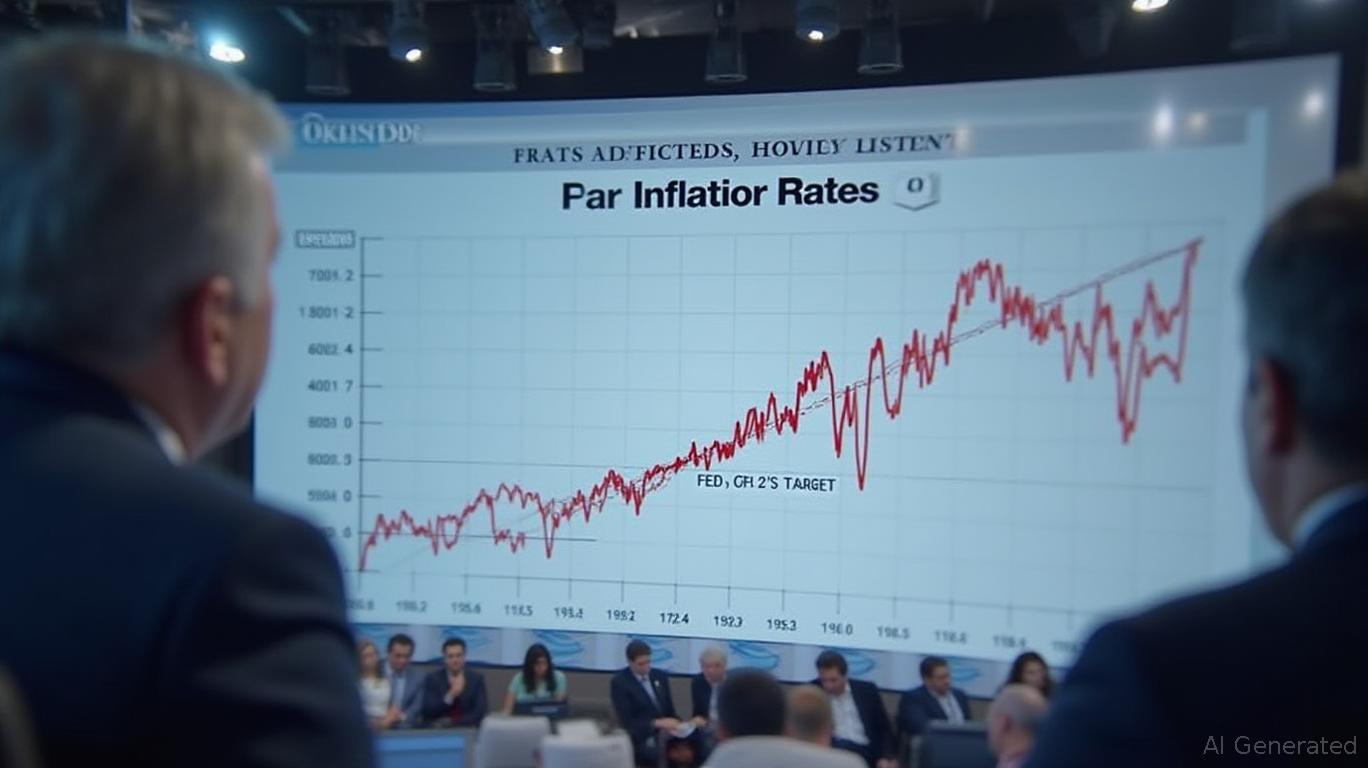The Fed's Pause Button: How the PCE Dip Opens the Door to Rate-Sensitive Plays
The April 2025 Personal Consumption Expenditures (PCE) inflation data delivered a critical signal for investors: the Fed's grip on rates is loosening. With headline inflation dipping to 2.2% year-over-year—the lowest since September—and core PCE settling at 2.5%, the Federal Reserve has entered a strategic pause. This creates a narrow but fertile window for investors to rotate into rate-sensitive sectors before the next chapter of Fed policy unfolds.
The April PCE dip isn't just a blip; it's a catalyst. The Fed's May FOMC minutes revealed a committee torn between patience and precaution. While policymakers acknowledge the risk of Trump-era tariffs sparking future inflation, they've opted to wait for clearer data. This hesitation translates to a prolonged period of stable rates—a gift for sectors that thrive when borrowing costs are anchored low.

The Playbook: Rotate into Rate-Sensitive Sectors Now
Rate-sensitive sectors—utilities, real estate, consumer staples, and healthcare—are historically among the first to benefit when the Fed pauses. These sectors are less tied to cyclical economic swings and more to the cost of capital. With the Fed's pause likely extending into late 2025, now is the time to position portfolios for this environment.
1. Utilities: The Steady Eddy of Low Rates
Utilities are the classic “bond proxy,” offering stable dividends and minimal sensitivity to economic cycles. The sector's performance is inversely tied to interest rates: when rates stall, utilities shine.
The chart above tells the story. While the S&P 500 has been volatile, XLU has held steady, gaining 5.2% year-to-date—a testament to its low-rate resilience. Investors should overweight utilities now, targeting names like
(NEE) and Dominion Energy (D), both of which offer dividend yields above 3% and exposure to clean energy trends.2. Real Estate: The Fed's Pause Fuels a Rally
Real estate investment trusts (REITs) and homebuilders are equally rate-sensitive. With borrowing costs frozen, cap rates stabilize, and demand for income-producing assets surges. The iShares U.S. Real Estate ETF (IYR) has outperformed the S&P 500 in six of the past eight months, a trend likely to continue.
The inverse relationship between REIT yields and Treasury yields is clear. As the Fed holds rates steady, IYR's dividend yield—now 3.8%—becomes a compelling alternative to bonds. Focus on REITs with defensive income streams, such as Public Storage (PSA) or Prologis (PLD), which benefit from secular trends in logistics and storage.
3. Consumer Staples: The Inflation Hedge That Isn't
Consumer staples often get labeled “inflation hedges,” but their true value lies in their stability. With the Fed's pause reducing uncertainty, staples like Coca-Cola (KO) and Procter & Gamble (PG) can outperform as investors rebalance toward predictable earnings.
The sector's low beta—a measure of volatility—makes it a bulwark against market swings. The Consumer Staples Select Sector SPDR Fund (XLY) has a beta of 0.7, meaning it's 30% less volatile than the S&P 500.
4. Healthcare: The Fed's Pause Meets a Growing Sector
Healthcare's demand is recession-proof, but its valuation has been held back by rate concerns. With the Fed on pause, sectors like biotech and pharmaceuticals can rebound. The iShares U.S. Healthcare ETF (IYH) trades at a 14.5x forward P/E—well below its five-year average of 19.8x—making it a bargain.
The Risks: Why the Fed's Caution Matters
The Fed's pause isn't without risks. A surge in tariffs or a spike in shelter costs could reignite inflation, forcing a rate hike. Goldman Sachs warns of a potential year-end inflation jump to 3.5%, which would pressure rate-sensitive sectors.
But here's the edge: the April PCE dip has already priced in some optimism. Investors who act now can lock in positions ahead of potential Fed moves. The Fed's emphasis on “waiting for clarity” means markets won't react until late summer at the earliest—a timeline that favors proactive investors.
Final Call: Rotate Before the Fed Reacts
The Fed's pause is a tactical gift. Rate-sensitive sectors offer a rare combination of stability and upside in a market craving direction. Investors should use this window to:
- Overweight utilities and REITs for yield and capital preservation.
- Add staples and healthcare to hedge against volatility.
- Avoid cyclical sectors like industrials or tech, which are more exposed to Fed policy shifts.
The April PCE dip isn't the end of inflation worries—it's the signal to act. The Fed's on pause. Your portfolio shouldn't be.
This analysis is based on public data and should not be considered personalized investment advice.

Comments
No comments yet